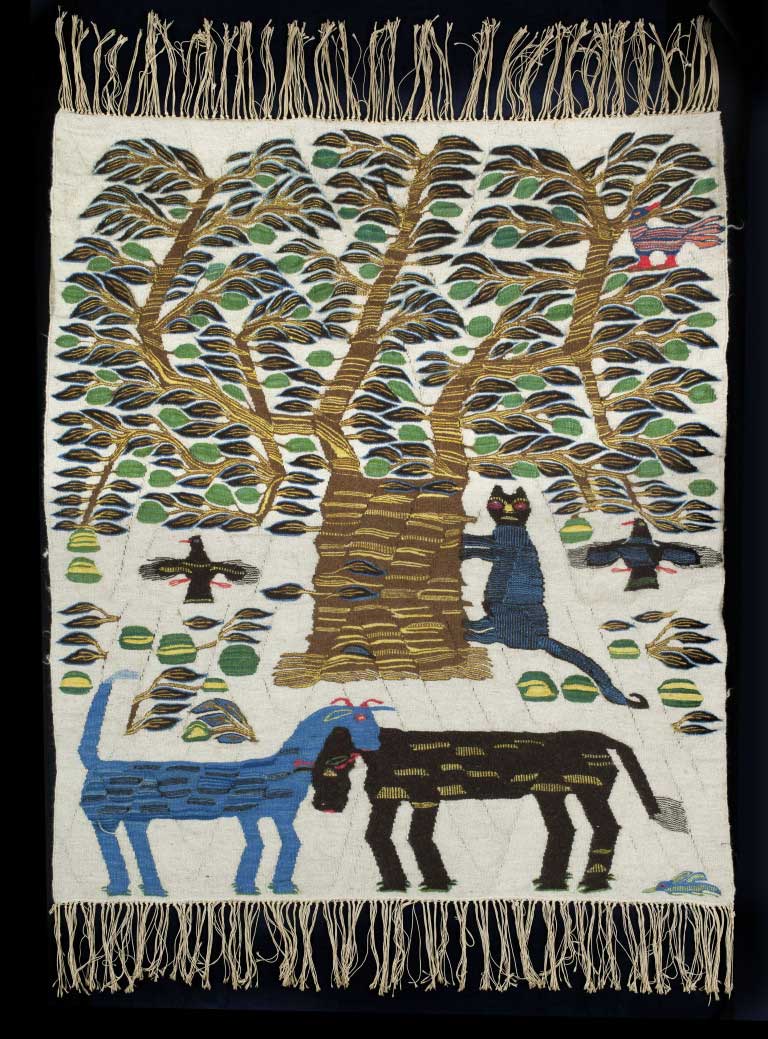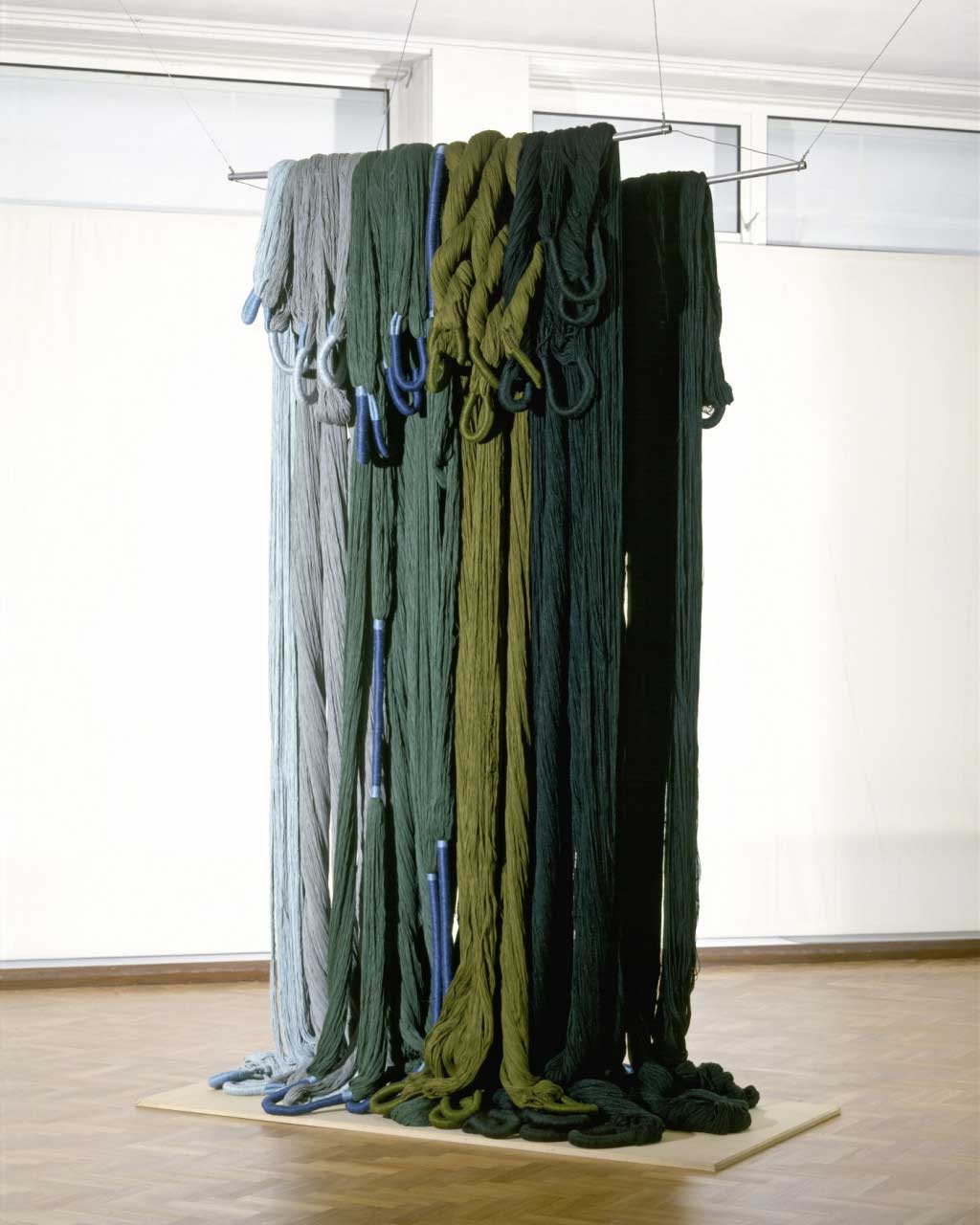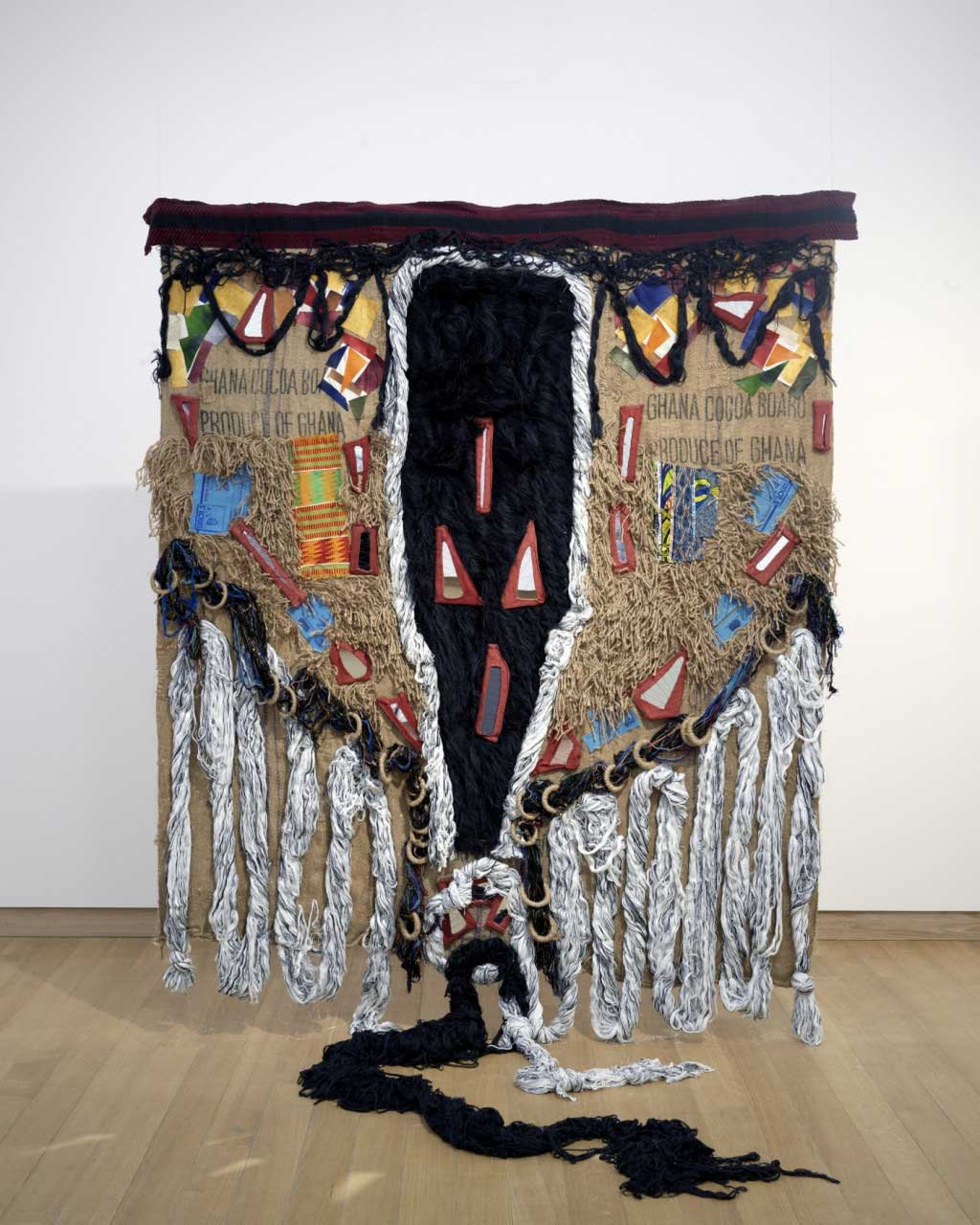In 1951, the Egyptian architect and educator Ramses Wissa Wassef, together with his wife Sophie Habib Georgi, embarked on an experiment on creativity that was praised by prominent figures from the art world, such as former director of the Stedelijk Willem Sandberg, artist Etel Adnan and philosopher Jean Paul Sartre. With the experiment, Wassef wanted to prove that creativity is innate, and anyone can make art. He did this by teaching children to weave carpets ‘uninhibited’ and isolated from ‘modern civilization’. In doing so, he opposed the monotonous mass production and lack of creativity in 20th century urban culture.
In Let Textiles Talk, the Stedelijk combines the carpets with works by Etel Adnan, Karel Appel, Dorothy Akpene Amenuke, Sheila Hicks, Jean Lurçat and others. These works take a transnational journey through history, raising questions about how the carpets and their makers have been contextualized over the years and from what perspective we can view the experiment today.
A group of Egyptian children, (textile) artists from all over the world and a former museum director tell their personal stories at the six tapestries. These stories have been strung together by Amanda Pinatih into a mosaic story about textile art, creative expression, and revaluation of the collection.





